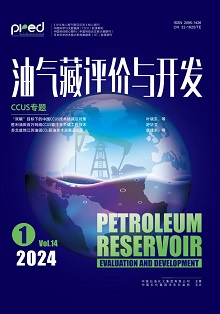Nanchuan Shale Gas Field is China's first commercially developed shale gas field dominated by normal pressure shale gas. In order to evaluate the exploration and development prospects of this type of shale gas, the exploration and development history of this area has been reviewed, the geological characteristics of the gas field are analyzed from the aspects such as structure, deposition, reservoir, preservation, in-situ stress, gas reservoir and production characteristics, and finally, the key technologies of exploration and development are summarized. The results show that: ①Nanchuan Shale Gas Field has experienced multi-stage tectonic movement. Its shale gas geological conditions are complex, and there are three structural belts: Pingqiao, Dongsheng and Yangchungou. The characteristics of deposition, reservoir, preservation and in-situ stress are quite different in different tectonic zones, but the shale gas reservoirs are generally with the type of elastic gas drive, mid-deep to deep layer, normal temperature, high pressure to normal pressure and dry gas. ②As for the production, its has the characteristics of high initial test output, high liquid volume, fast decline, medium elastic yield and relatively low single well's EUR. ③Six key technologies of exploration and development have been formed, which are, “sweet spot” target evaluation, reservoir characterization, in-situ stress field prediction, geology-engineering integration design of horizontal wells, development technology policy and low-cost engineering technology. ④The discovery of Nanchuan shale gas field brings four inspiration: firstly, firming exploration confidence is the foundation of exploration breakthrough; secondly, deepening basic geological research is the core of breakthrough; thirdly, innovative technological practice is the key to benefit development; fourthly, the implementation of the integration model is the guarantee of improving quality and efficiency.








